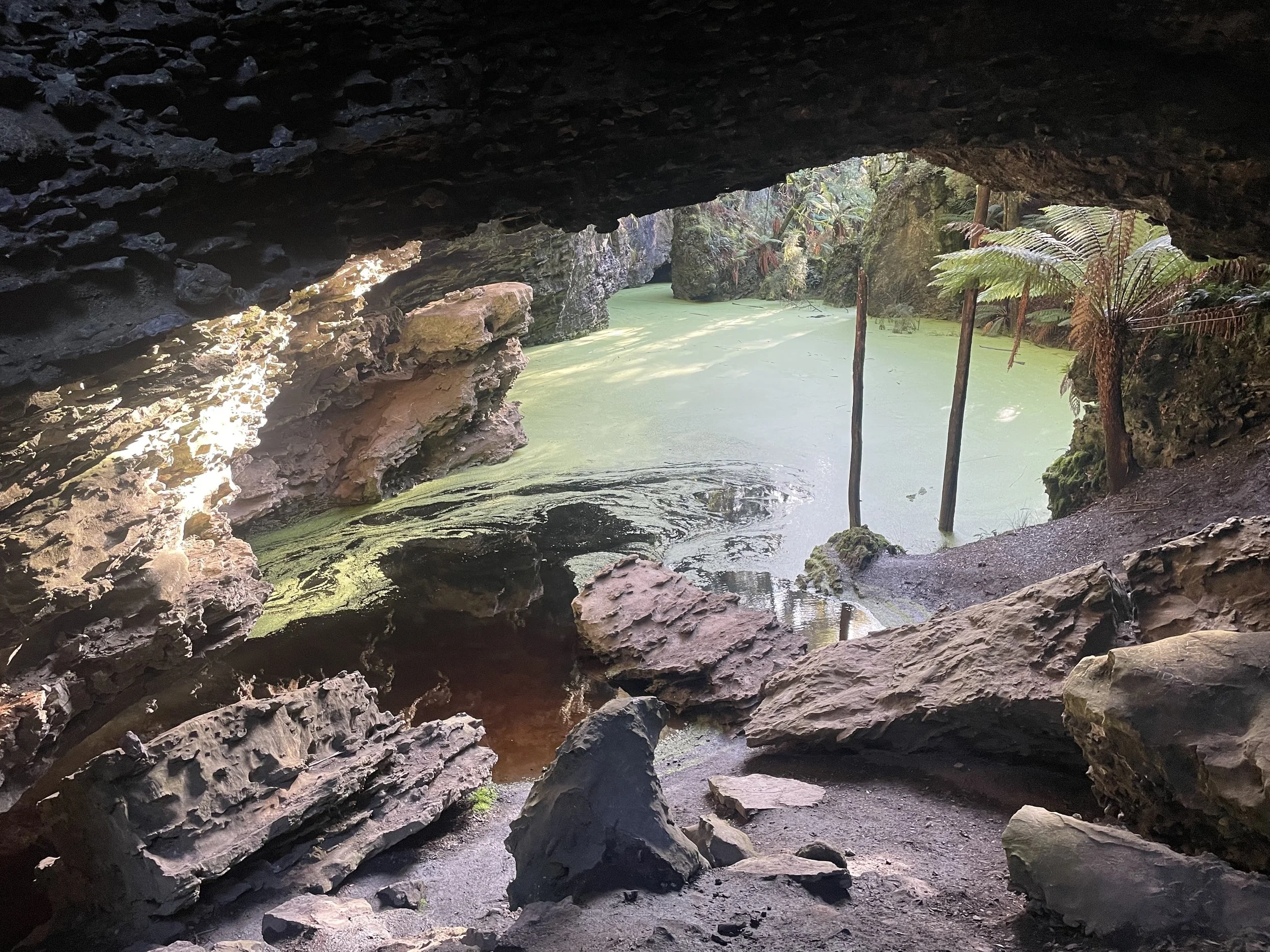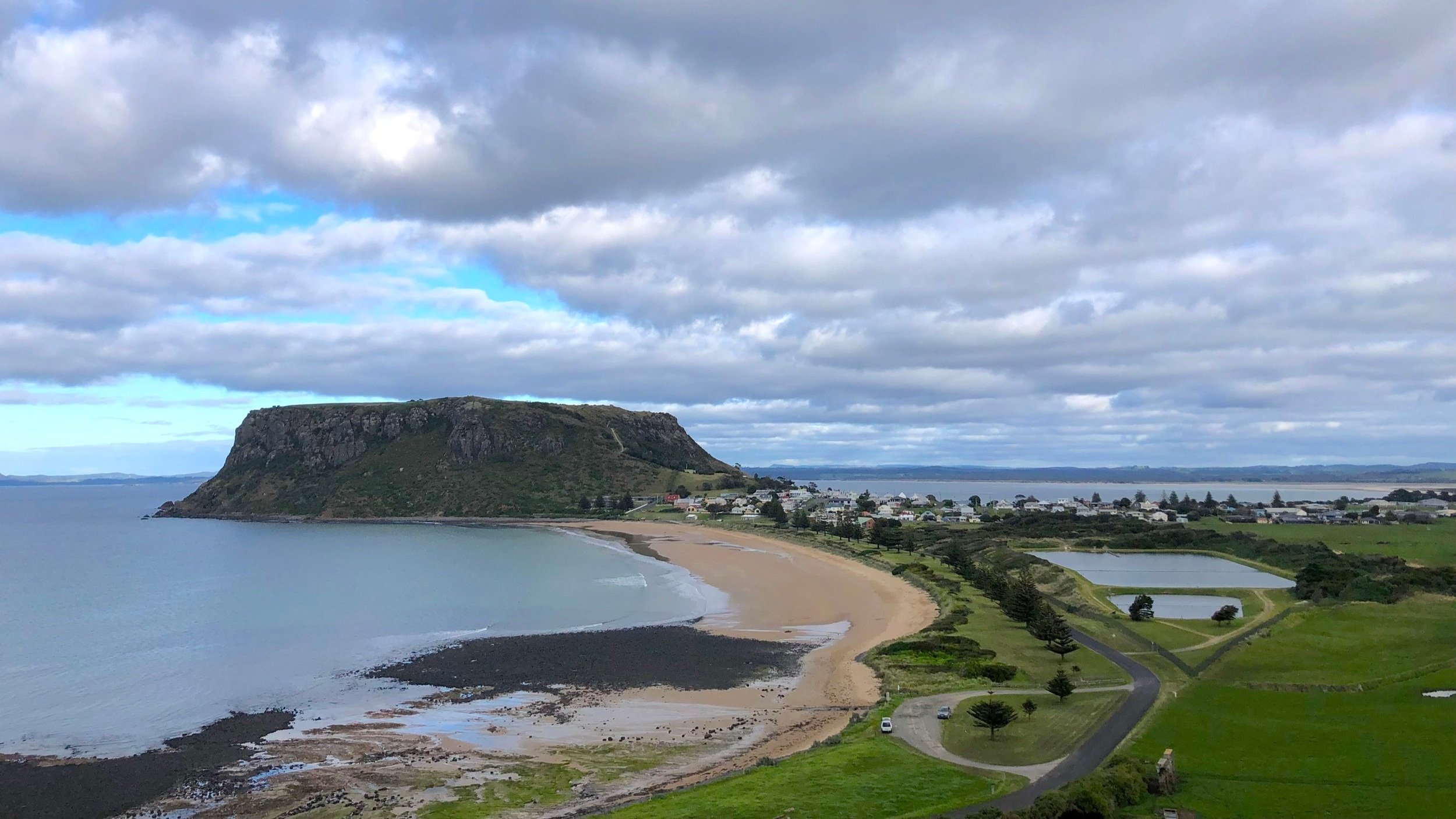Trowutta Arch guide: How to best see Tasmania's grand sinkhole
The Trowutta Arch in Tasmania is an incredible reminder of the Earth's ancient history and its enduring ability to shape landscapes of unparalleled beauty.
By Esta Pinto.
When I was there, it felt prehistoric, like I’d been transported back in time. I wouldn’t have been surprised if I saw a pterodactyl casually flying overheard. It was a mossy, ferny, enchanting, powerful experience that really solidified that we’re all just tiny ants living on a blue-green marvellous marble, and the need to protect the green and blue patches that we are lucky enough to have left, as well as the creatures that inhabit them, yes that includes humanity itself. [See the Bob Brown Foundation or this Patagonia documentary if you don’t know what I mean.]
You might ask, how on earth did nature carve such a dramatic and formidable piece of rocky wondrous art? Keep reading to learn more about this awe-inspiring geological formation, where it is in Tasmania exactly, how to get to the Trowutta Arch and other cool tidbits you’ll appreciate.
Before we begin, I wish to acknowledge the traditional and original owners of the Tarkine, the Tasmanian Aboriginal groups who called this place home and pay respect to those that have passed before us and and pay my respects to Elders past, present and emerging. I honour the uninterrupted care, protection and belonging to these islands, skies and waterways, before the invasion and colonisation of European settlement. I honour their stories, songs, art, and culture, and their aspirations for the future of their people and Tasmania/lutruwita.
What is the Trowutta Arch and how did it form?
The Trowutta Arch is a rare, naturally occurring arch that was created by the collapse of a cave and the creation of two sinkholes on either side of it--one dry and one filled with water.
The water-filled sinkhole is geomorphologically classified as a cenote and is one of the best examples in Tasmania at more than 20 metres deep.
If you continue along the Tarkine Drive, you will come across other notable sinkholes, including Lake Chisholm, and a sinkhole that’s adjacent to the road on the actual Tarkine Drive itself.
Read about the Tarkine Drive Guide here, highlighting the 7 most memorable attractions to prioritise.
Where is the Trowutta Arch?
You can find the Trowutta Arch in the Tarkine region of northwestern Tasmania, Australia, in the Tarkine forest, which is the second-largest expanse of temperate rainforest in the world, and the largest in Australia.
The Trowutta Arch track in Tasmania is one of the most iconic stops on the famed Tarkine Drive. You can view exactly where via the official map above.
How long is the Trowutta Arch walk?
The Trowutta Arch walk is around 1.1 kilometres in length and 20 minutes return, and is quite easy to walk, with a wide, relatively flat trail, with a small set of stairs to view the arch.
How to get to the Trowutta Arch.
Not too far off the beaten path from Stanley and Smithton, the Trowutta Arch can really only be accessed by car via the famed Tarkine Drive.
If you’re coming from outside the state of Tasmania, here is the best way to get to the Trowutta Arch.
Fly, then drive.
The closest airport with direct flights from most major airports to the Trowatta Arch is Launceston Airport.
However, you could also potentially fly into Burnie Airport, which has incoming flights from Rex, Sharp and Qantas Airlines. Burnie Airport has direct flights from Melbourne, or you could change from a connecting flight at Melbourne to get to Burnie Airport.
From either of these airports, you could hire a car and drive to the Tarkine.
Sail, then drive.
Of course, for people who might want to use their own car or motorhome instead of hiring one, you can always bring it over from mainland Australia via The Spirit of Tasmania.
Don’t have one? You could always consider joining a Tarkine tour.
Where is the best place to stay if you’re visiting the Trowutta Arch in the Tarkine?
Lodging.
Known for ‘The Nut,’ (pictured above) Stanley is a great, character-filled town to base yourself in if you’re exploring the Tarkine.
Smithton is also super convenient in terms of proximity, although personally, I chose to stay in Stanley as the vibe was more my jam.
Marrawah is also a cool little coastal town with great surf, which sits at the edge of the Tarkine wilderness. It’s close to the coastal side of the Tarkine loop, although further away from the Trowutta Arch.
Arthur River is on the Tarkine Drive and closer to the raw and rugged coast rather than the forest. Still, it’s a nice place to base yourself if you’re doing the Tarkine loop.
Camping.
In terms of proximity, Julius River is the closest campground to the Trowutta Arch/Caves State Reserve but is suited for motorhomes and campervans only, not tents. You could also consider:
Tall Timbers Tasmania, located on the outskirts of Smithton, which offers free RV parking.
Stanley Recreation Grounds
Marrawah Green Point Beach Camping Area
Arthur Pieman Conservation Area
How far is it from Stanley to the Trowutta Arch?
It’s approximately a 45-minute drive from Stanley to the Trowutta Arch. There are a few different routes to get there, but this one is the most straightforward:
Take the Bass Hwy/A2, C217 and and follow the signs to the township of Trowutta. From there, follow the signs to the Trowutta Arch.
The trail for the Trowutta Arch walking track begins on Gun Road, at the Trowutta Caves State Reserve.



